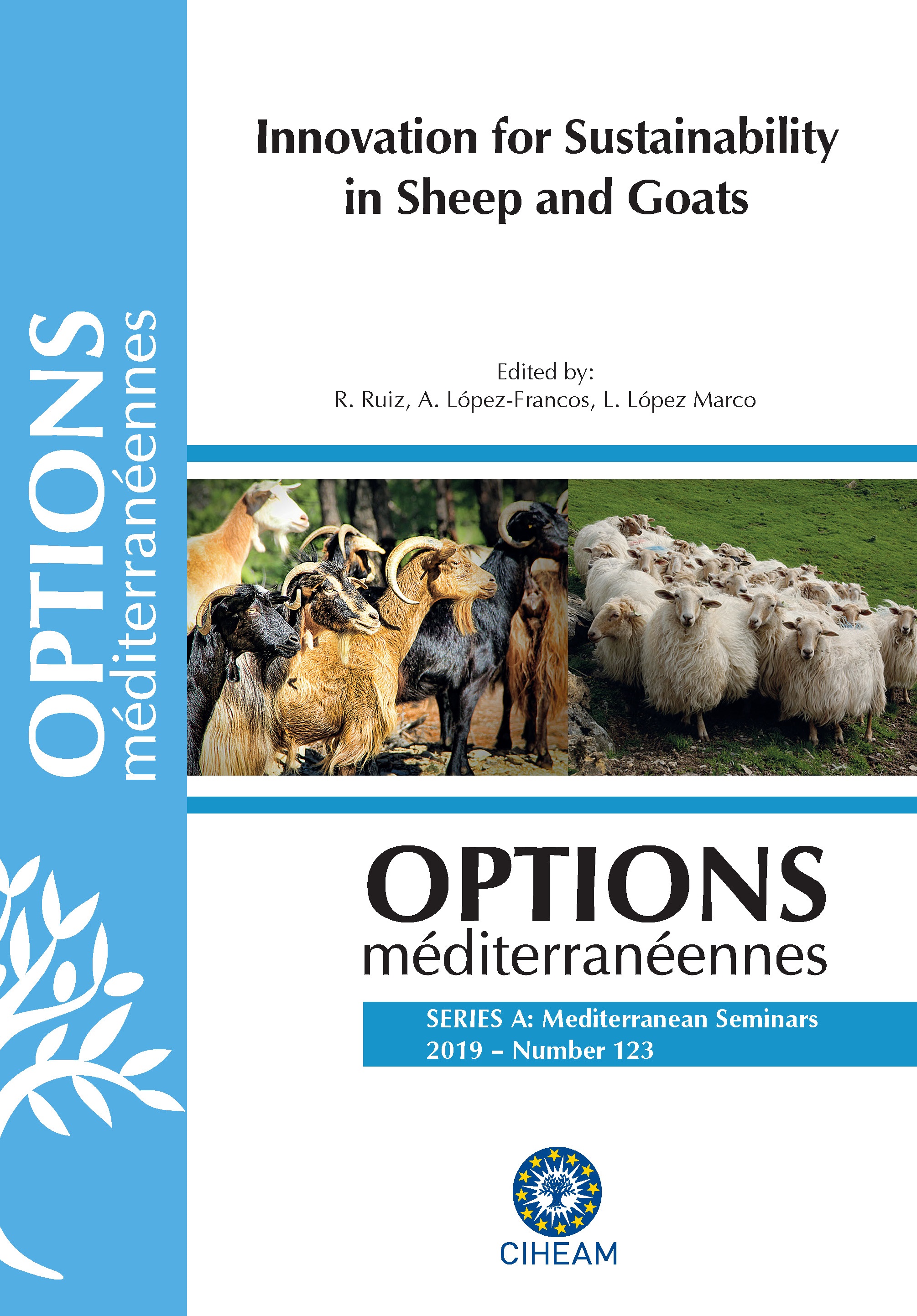| Article précédent | p. 191-194 | Article suivant |
Effects of EPA and DHA on in vitro ruminal biohydrogenation of 18-carbon fatty acids in sheep
Marine lipid supplements have been used to inhibit the ruminal saturation of trans-11 18:1, with the final goal of enhancing cis-9 trans-11 conjugated linoleic acid (CLA) concentration in milk and meat. This response would be largely explained by the effects of n-3 very long chain polyunsaturated fatty acids (PUFA) on the last step of biohydrogenation (BH). In cows, docosahexaenoic acid (DHA, 22:6n-3) has been suggested to be a stronger inhibitor of trans-18:1 hydrogenation than eicosapentaenoic acid (EPA, 20:5n-3), but information about changes in individual 18:1 isomers is very limited, and no reports are available in sheep. This in vitro study was therefore conducted to compare the impact of EPA and DHA on the BH of 18-carbon fatty acids in ovine, using batch cultures of rumen microorganisms and cannulated ewes as inocula donors. The two PUFA were added at a dose of 2% incubated DM and effects were examined after 24 h of incubation. The DHA treatment led to the greatest concentration of trans-18:1 in digesta, but this was mainly accounted for by accumulation of metabolites from alternative BH pathways (e.g, trans-9, -10, -12 and -15 18:1), while the inhibition of trans-11 18:1 saturation was comparable with both PUFA. The saturation of cis-18:1 was constrained too, particularly by DHA, whereas EPA seemed to have specific effects on 18:3n-3 metabolism. Changes in oxo-FA concentrations suggested that ruminal hydration (an alternative metabolic pathway to BH) was also affected by PUFA treatments.
Les suppléments lipidiques marins ont été utilisés pour inhiber la saturation ruminale du trans-11 18:1, dans le but final d’améliorer la concentration en acide linoléique conjugué (CLA) cis-9 trans-11 18:2 dans le lait et la viande. Cette réponse s’explique en grande partie par les effets des acides gras polyinsaturés n-3 à très longue chaîne (AGPI) sur la dernière étape de la biohydrogénation (BH). Chez le bovin, l’acide docosahexaénoïque (DHA, 22:6n-3) a été proposé comme un plus fort inhibiteur de l’hydrogénation des trans-18:1 que l’acide eicosapentaénoïque (EPA, 20:5n-3), mais il y a trop peu de données sur les variations des isomères 18:1 individuels et aucune étude n’est disponible chez les ovins. Cet essai in vitro a donc été réalisée pour comparer l’impact de l’EPA et du DHA sur la BH des acides gras à 18 carbones chez des moutons, en utilisant des cultures discontinues de microorganismes du rumen et des brebis canulées comme donneuses d’inoculum. Les deux AGPI ont été ajoutés à une dose de 2% de la matière sèche incubée et les effets ont été examinés après 24 h d’incubation. Le traitement DHA a induit la plus grande concentration en trans-18:1 dans les digesta, mais cela était principalement attribuable à l’accumulation des intermédiares de voies de BH alternatives (p. ex., trans-9, -10, -12 et -15 18: 1), alors que l’inhibition de la saturation du trans-11 18:1 était comparable pour les deux AGPI incubées. La saturation des cis-18:1 était également limitée, en particulier par le DHA, alors que l’EPA semblait avoir des effets spécifiques sur le métabolisme du 18:3n-3. Les changements des concentrations en céto-AG ont suggéré que l’hydratation ruminale (une voie métabolique alternative à la BH) a également été affectée par les traitements avec AGPI.
- [ Afficher ]
- [ Télécharger ]
- [ Exporter la citation ]
Vous pouvez télécharger la citation au format :
- [ Imprimer ]
-
Mots-clés
ACIDE GRAS POLYINSATURE, BREBIS, METABOLISME DES LIPIDESCiter cet article
Toral P.G., Hervás G., Carreño D., Leskinen H., Belenguer A., Shingfield K.J., Frutos P. Effects of EPA and DHA on in vitro ruminal biohydrogenation of 18-carbon fatty acids in sheep. In : Ruiz R. (ed.), López-Francos A. (ed.), López Marco L. (ed.). Innovation for sustainability in sheep and goats. Zaragoza : CIHEAM, 2019. p. 191-194. (Options Méditerranéennes : Série A. Séminaires Méditerranéens; n. 123). 2. Joint Seminar of the Subnetworks on Nutrition and on Production Systems of the FAO-CIHEAM Network for Research and Development in Sheep and Goats, 2017/10/03-05, Vitoria-Gasteiz (Spain). http://om.ciheam.org/om/pdf/a123/00007884.pdf



